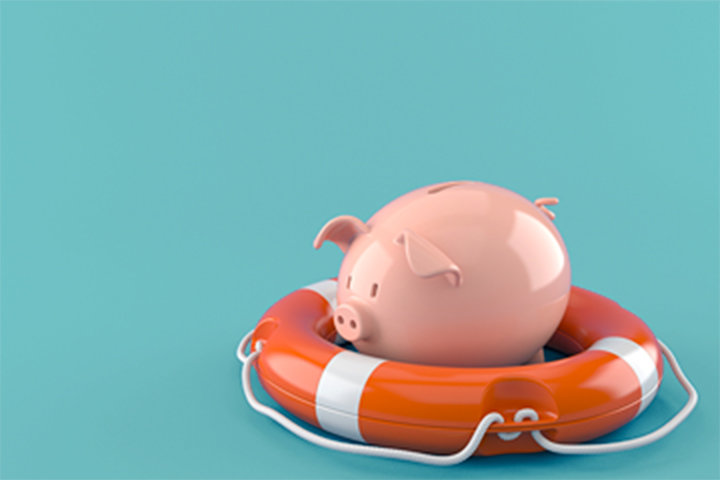Hate budgeting? This is your guide to budgeting

Keytrade Bank
keytradebank.be
March 29, 2022
(updated August 29, 2022)
4 minutes to read
Setting and following a budget: not everyone enjoys doing this. A cash receipt here, a payslip there, an invoice who knows where ... we need to track and monitor all this income and expenditure, but all that is boring.
At the same time, we also realise that a budget is not a nice to have, but a must have. That’s a frustrating feeling. On the one hand, the horror of paperwork. On the other you know that it is only by knowing your numbers that you can actually know how much you set aside, and see where the problem areas are.
Fortunately, there is the 80/20 rule.
The 80/20 principle says that you should save and/or invest 20% of your income and spend the rest. It is an easy way to achieve and maintain financial stability. You do this by ensuring that you save enough money to get through difficult times and/or invest enough money to build up a reserve for later in life.
How does that work?
You take your net income as the starting point. This means your income after taxes and the other deductions from your salary have been subtracted. 20% of that net salary should be set aside for savings and/or investment. The other 80% covers all your expenses: from the supermarket to the car wash, from the hairdresser to the cinema.
Ideally, you should set aside the 20% as soon as you receive your income. The aim is to ensure that you always pay yourself first.
What are the benefits of this?
It’s a simple rule of thumb. It makes it much easier to keep your resolution. It can be a good choice if you are new to budgeting.
Less hassle: there’s no need to keep track of every receipt, or to update spreadsheets every week, create graphs or wrestle with an app. It can also be a good idea if you struggle with a more structured budget, or find it stressful to stick to it.
You build up a savings reserve for unforeseen events (like a washing machine breakdown), put money aside for a major purchase (house, car) or invest it in order to achieve a potential return or extra income.
How to get started?
> Save
If you want to save the 20%, it is easy to set up an automatic transfer every month from your current account to your savings account. Suppose that your net income is EUR 2,000 then EUR 400 will be transferred to your savings account each month. You use the remaining EUR 1,600, to pay for all your expenses. After a while, you can make it a game to see how much you can have left at the end of the month. You can use that to give yourself to a little extra treat, or to top up your savings.
> Investing
If you want to invest the 20%, a regular investment plan is a simple solution, such as a KEYPLAN. You can do this if you have already saved a reserve (on average, a savings buffer of 3 to 6 months net income is enough). Although investing involves a higher risk than saving, it also offers a higher potential return.
Suppose that your net income is EUR 2,500, then each month an automatic transfer will move EUR 500 to your investment plan. You then invest a fixed amount of this each month in each of a number of investment funds.
An investment fund is a basket of different shares and/or bonds. This way, you spread the risk and avoid investing at a "bad time" (all your money in one go at a time when the stock markets are at their peak). With a regular investment plan, you can spread your investments over time: a little every month.
> Combination of savings and investments
Of course, an 80/10/10 or 80/15/5 approach is also possible, because you can also invest small amounts through an investment plan. With KEYPLAN from Keytrade Bank you can start from as little as EUR 25 per month.
Pick 'n' mix
An 80/20 approach combines flexibility and security. Keep in mind that the 80/20 rule of thumb is a general rule. You may have financial priorities that do not suit this rule of thumb. So choose what's best and easiest for you: whether it’s 80/20, 70/30 or 90/10.


